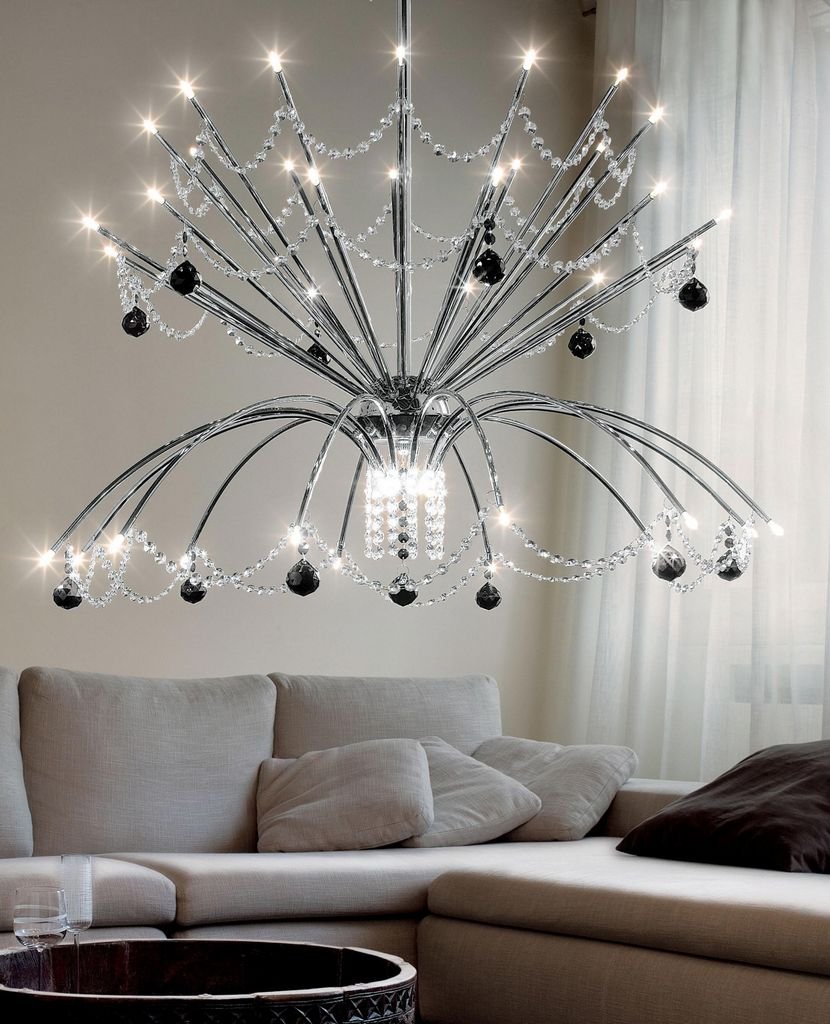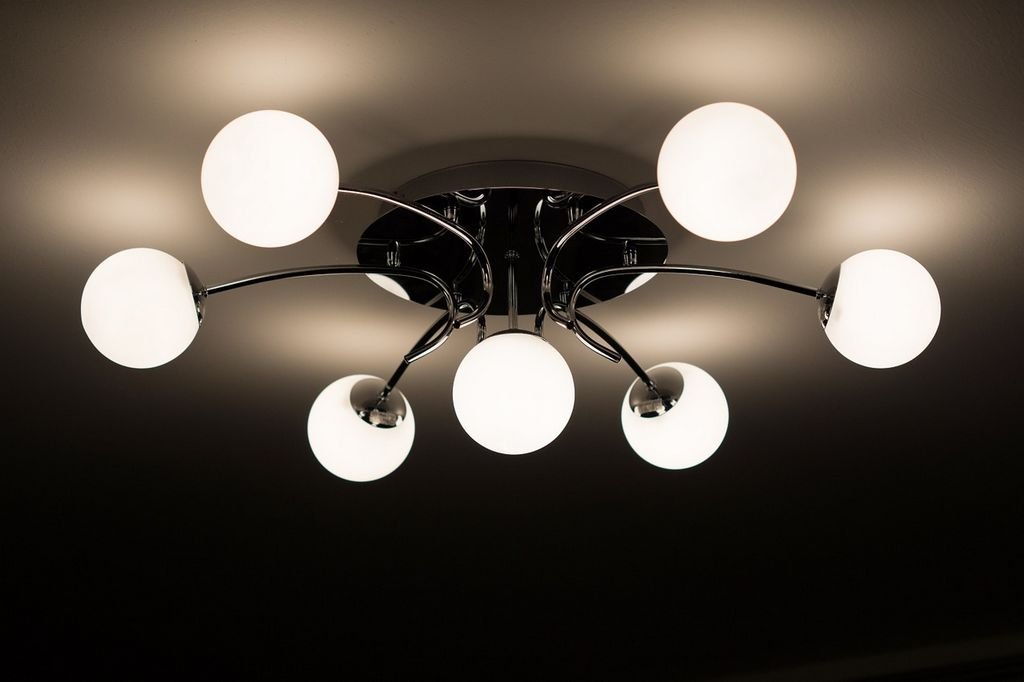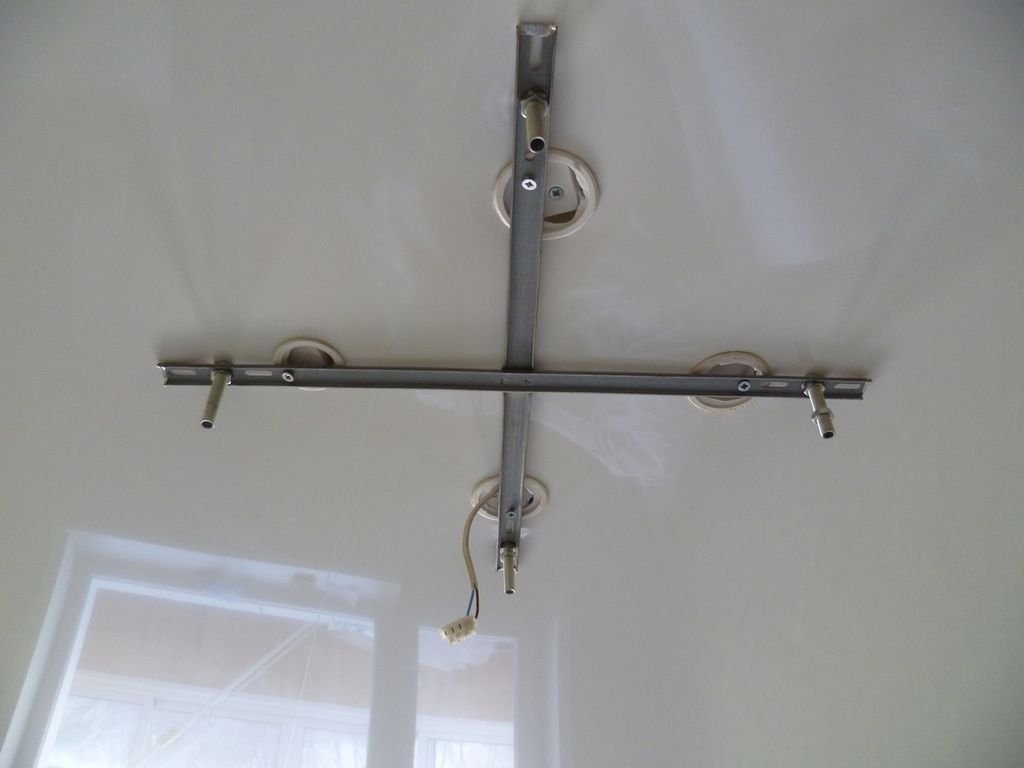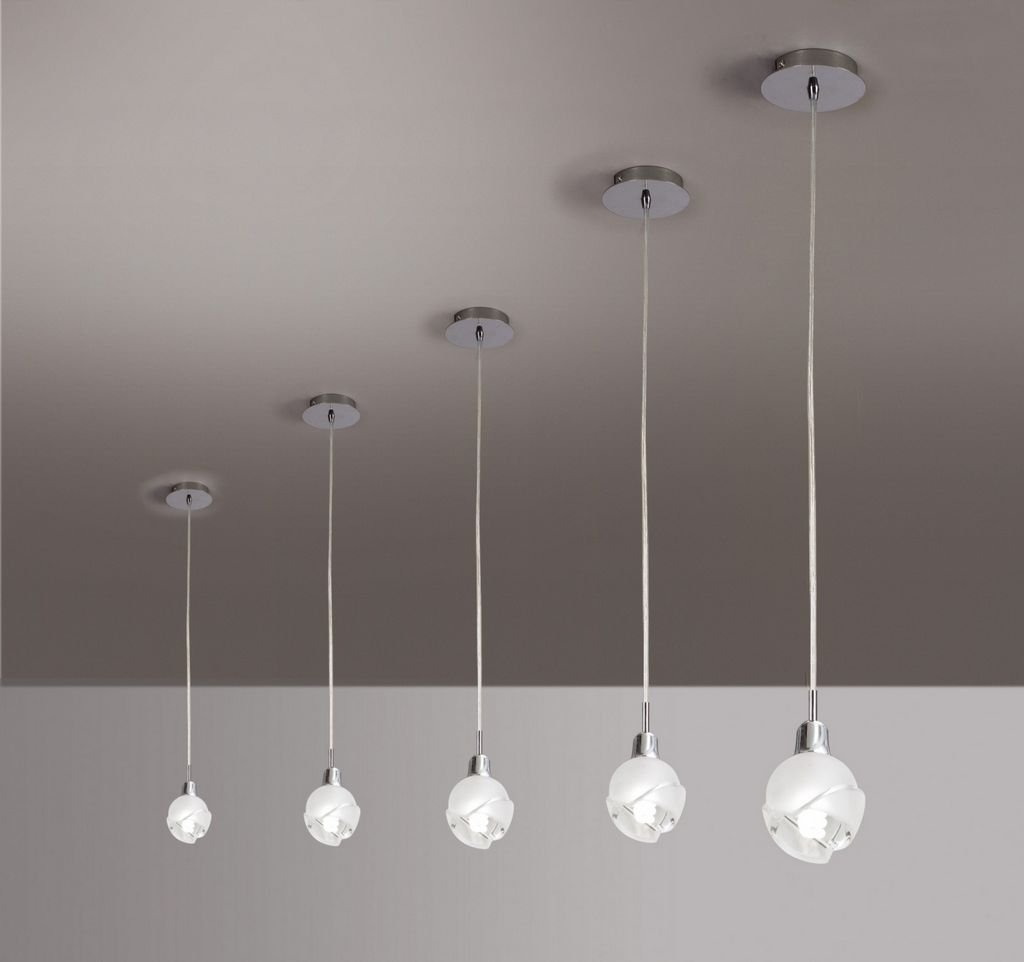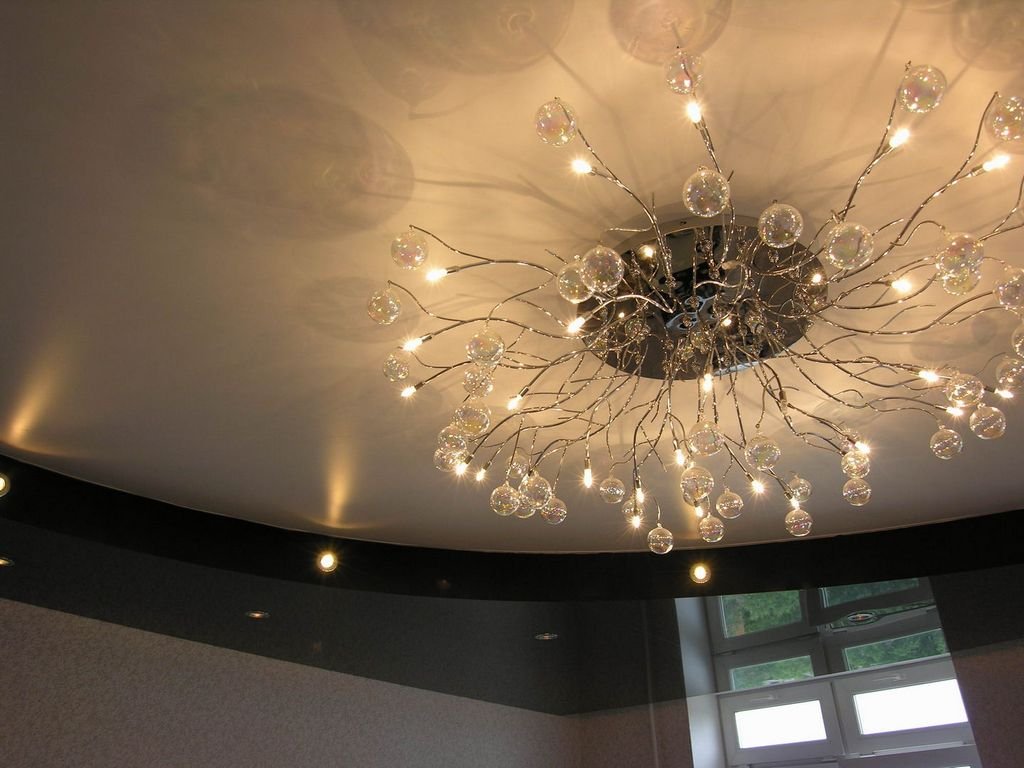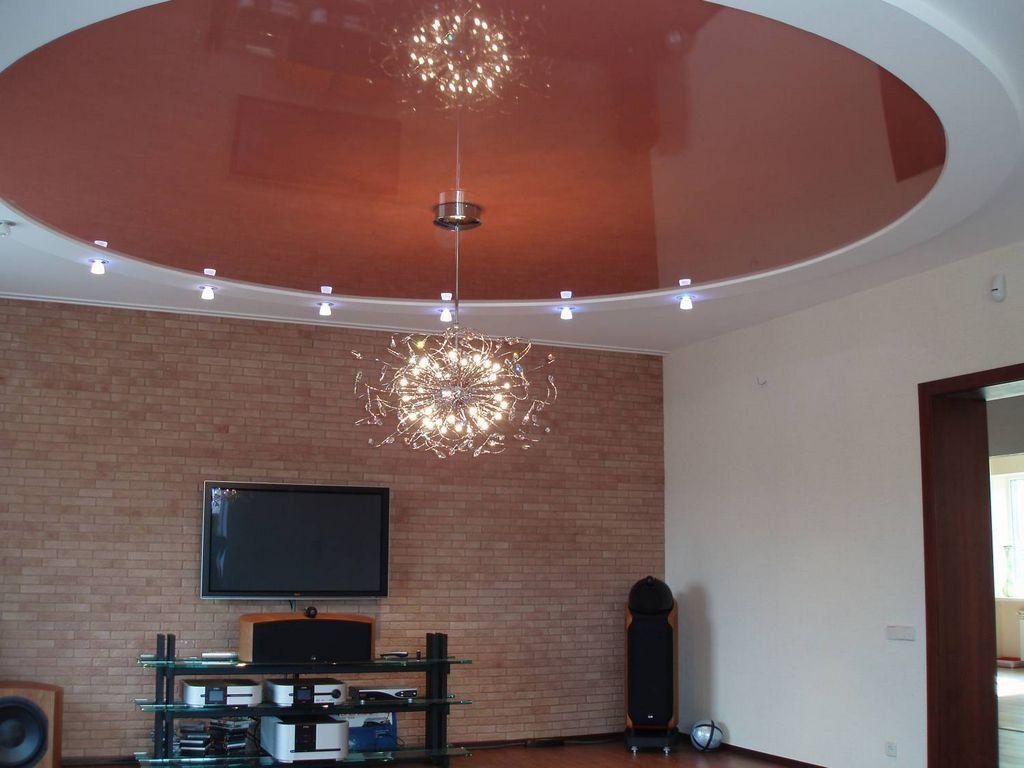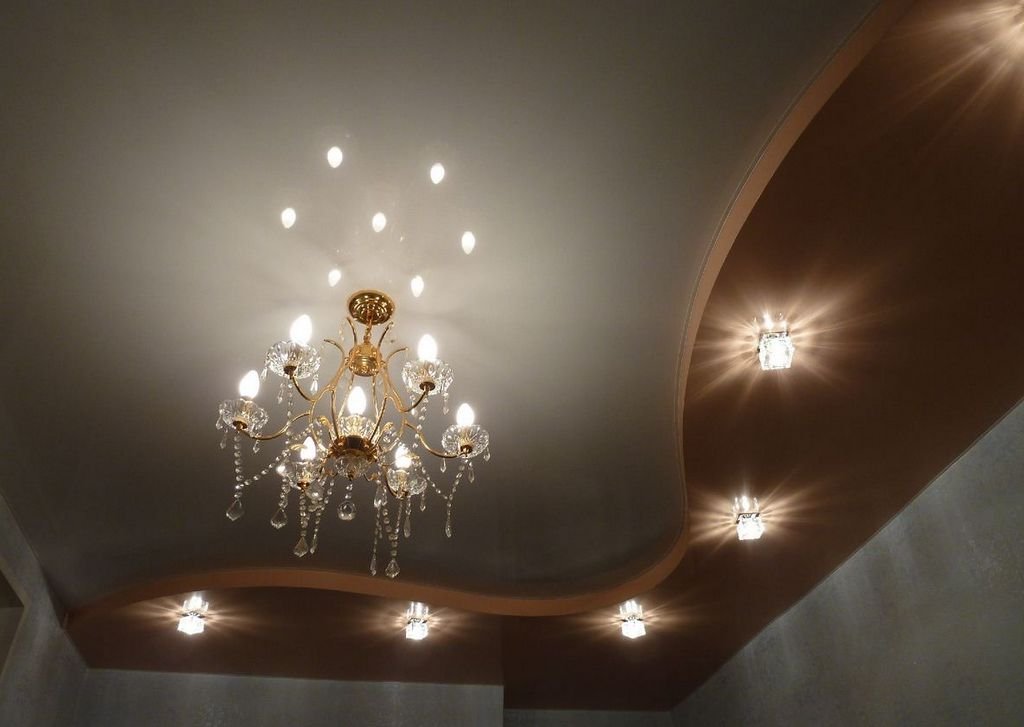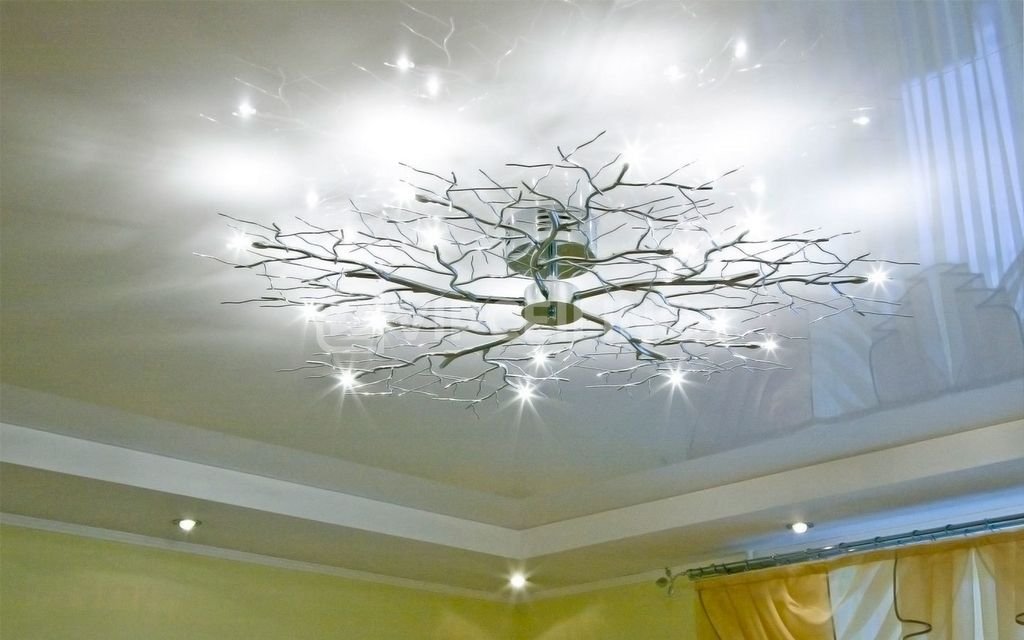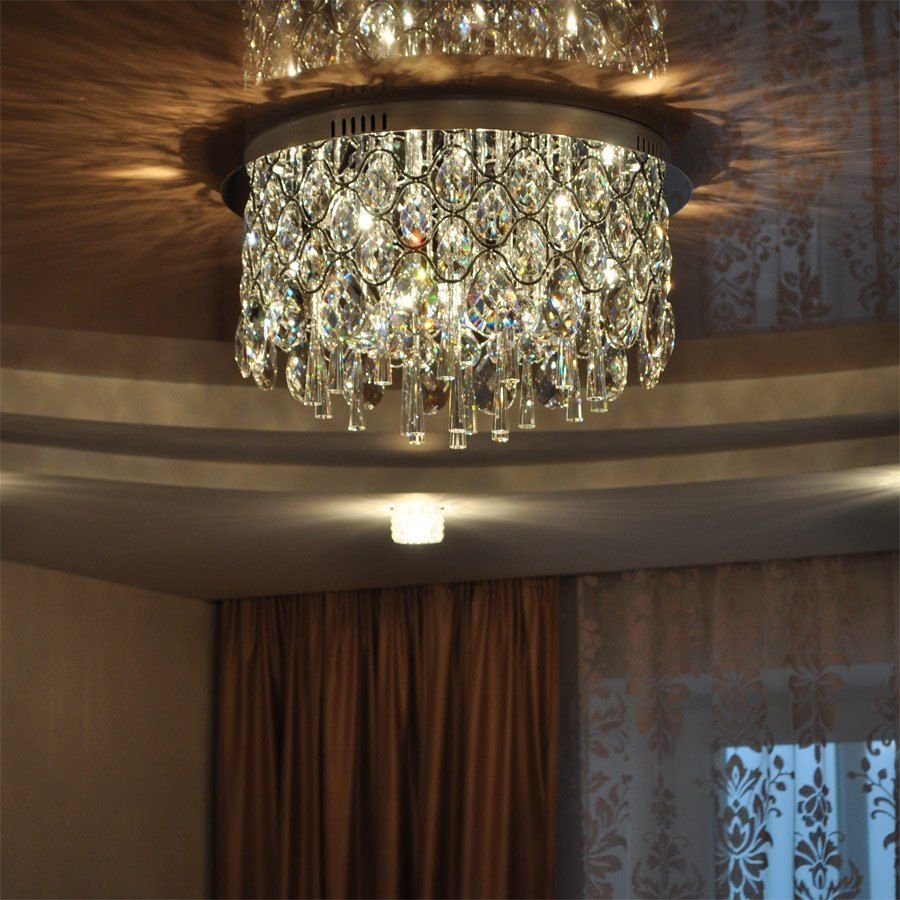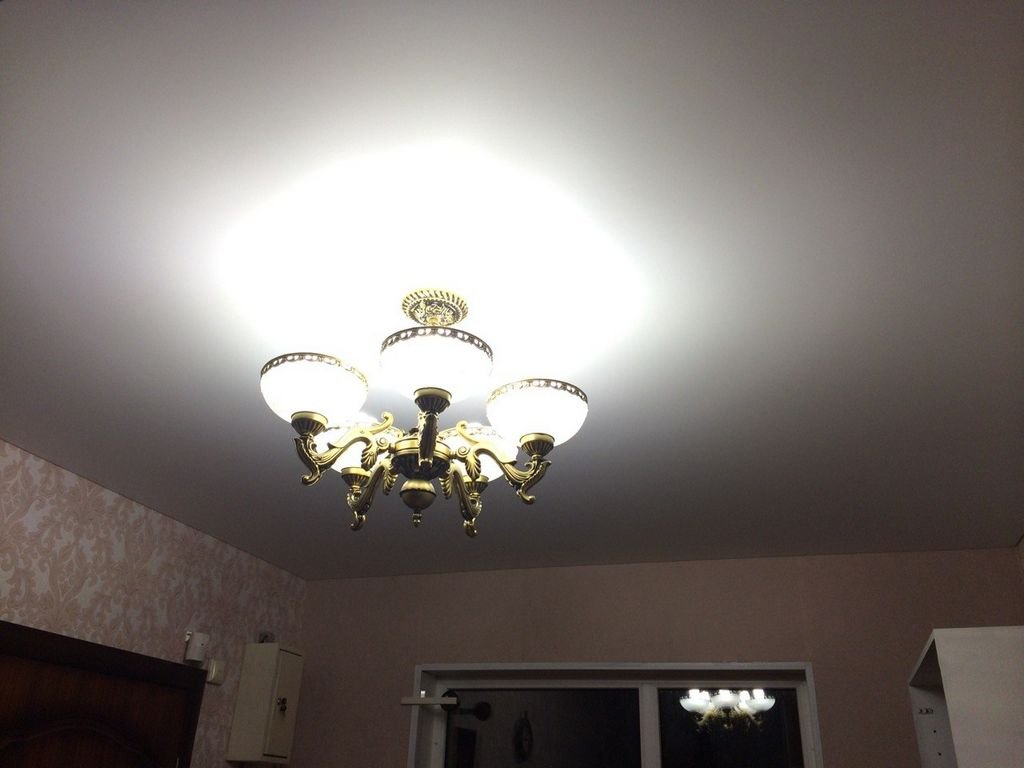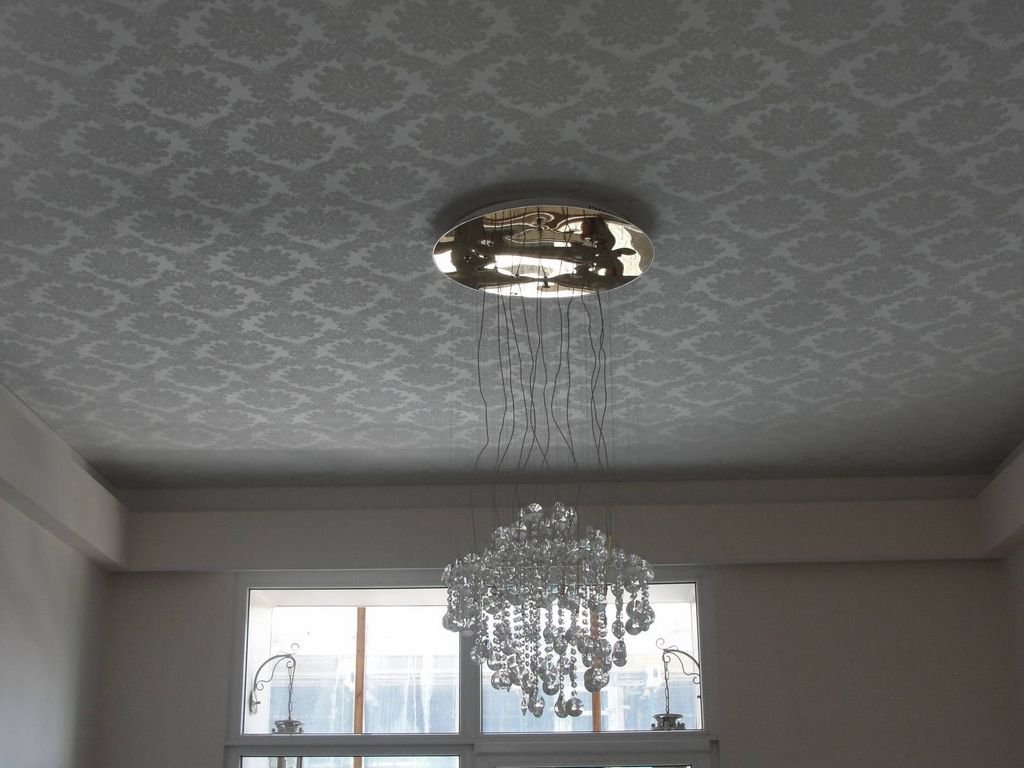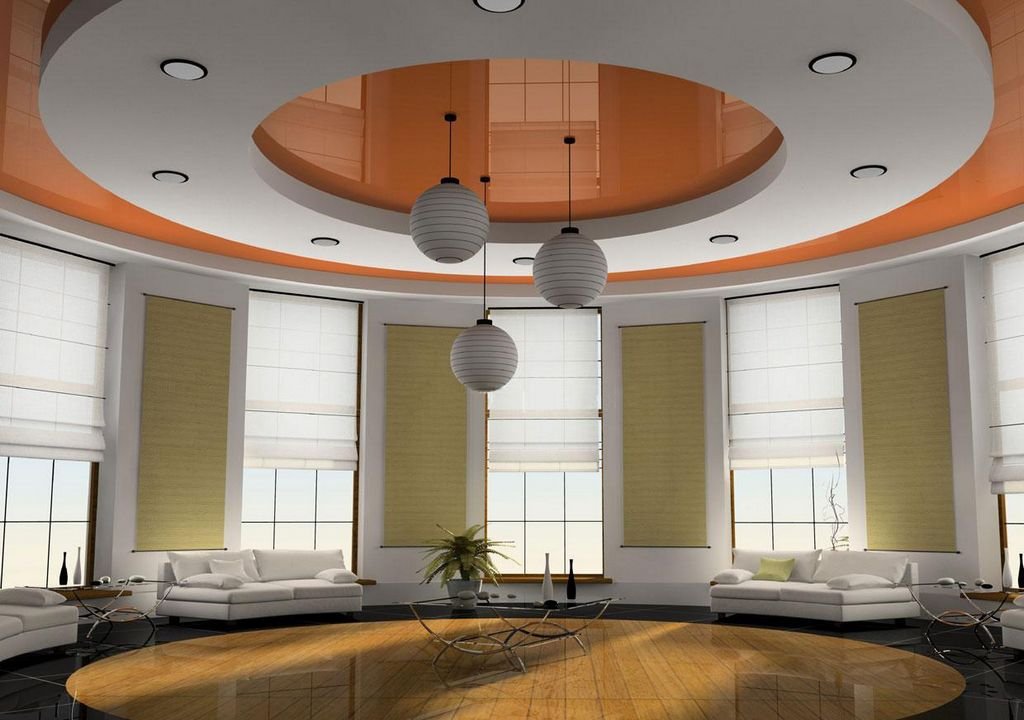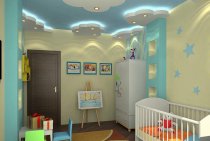There is an opinion that for stretch ceilings special fixtures are required, since the specific features of the tension structures do not allow the use of traditional chandeliers. In reality, this is not so. Lighting devices for this type of ceiling must meet certain requirements related to the design, type and power of the lamps, as well as the method of attachment, but there are no strict restrictions. Let's find out how to choose a chandelier for a stretch ceiling, which will not harm the new ceiling covering and will give the interior of the room a complete look.
Requirements for luminaires for stretch ceilings
PVC film or synthetic fabric, which form the basis of the stretch ceiling, are quite delicate materials. They are united by instability to high temperatures: when heated to 70-80 degrees, a PVC sheet begins to deform; yellow or black spots may appear on a polyester sheet due to improperly selected lighting. In this regard, when choosing fixtures, several requirements must be taken into account.
- To protect the ceiling from strong heat, it is better to choose a chandelier that will be located at some distance from the canvas. If the lamp shades are directed downwards, the distance between them and the ceiling must be at least 20 cm, if the horns look up, it increases to 40 cm. The distance will also depend on which lamps are used in the device.
- The plate-type overhead chandelier must be equipped with a special protective plate at the base, which prevents the ceiling from heating up. Luminaires located close to the ceiling should be made of materials that do not heat up from light bulbs.
- The paws should have a small power and be placed in closed shades. The power of incandescent lamps should be no more than 60 watts with a vertical arrangement of the lamp and 40 watts with a horizontal one. The power of halogen lamps should not exceed 35 watts. There are no special restrictions for low-temperature energy-saving or LED light bulbs.
- To avoid damage to the coating, it is not recommended to use luminaires with open lamps directed towards the ceiling.
Features of fastening the chandelier
Since the stretch ceiling is a decorative fabric stretched at a short distance from the ceiling, the lighting device cannot be attached directly to it. The luminaires are attached to the old ceiling, so the weight of the lighting device, the type of attachment and the nuances of connection do not really matter.
Important! The most significant feature of the installation of a chandelier is the need to prepare a fixture for it before installing a stretch ceiling.
Preparation for installing the chandelier will be as follows:
- after planning the lighting scheme, markings are made on the old ceiling;
- preparing wiring and equipment;
- fasteners are installed in place of the future chandelier;
The professionals who will stretch ceiling installation, will leave a hole reinforced with a PVC tape or rim in the required place, which will prevent the web from tearing.
Important! Due to the fact that the mount must be installed before the installation of the false ceiling, it is necessary to select the type of chandelier in advance.
Hanging chandelier fixture
Most classic chandeliers have a pendant type mount. When choosing such a lamp, before installing a stretch ceiling, you need to fix a strong metal ring or hook on the ceiling. When installing it, consider one small but important nuance:
- if the mounting pin of the future chandelier has an exclusively functional value, the fastener can be located at the very base;
- in the event that the hairpin plays the role of an important decorative element, the mounting hook can be lowered a little lower.
Attachment
Since the false chandelier must be placed close to the stretched canvas, a special mounting plate must be prepared before installing the stretch ceiling. It must be fixed at the required level, taking into account the distance from the main ceiling to the stretch ceiling. To do this, you can put a wooden block under the bar, the thickness of which will be 5-10 mm less than the distance between the ceiling surfaces.
Tip: Mounting strips for large and heavy surface-mounted luminaires require the creation of significant holes in the stretched canvas, which can adversely affect its appearance and quality, so their use, although possible, is not desirable.
The shape and size of the chandelier
Depending on the plane in which the chandelier is located, it can be horizontal and vertical. For a room with low ceilings or ceilings of medium height, not exceeding 3 meters, a horizontal chandelier with a diameter of 1 meter is suitable. It can be a multi-track lamp or a design with a modern design, having evenly distributed light sources far enough from the center to provide high-quality illumination of the entire area of \u200b\u200bthe room.
For a hall with a high ceiling, it is better to choose a vertical chandelier with a diameter of 30 to 50 cm and a height of about a meter. A hanging lamp is much better than a horizontal one, it will illuminate the space of such a room.
For lighting a large hall, the area of which exceeds 20 square meters. m., the light of one chandelier will not be enough. In an elongated room, you can install two chandeliers, in a room that has a shape close to a square, the main lamp will have to be supplemented with spotlights.
Luminaires for different types of stretch ceiling
Gloss
The main feature of the glossy surface is its excellent reflectivity. What fixtures are able to emphasize this feature, putting it in a good light? A chandelier in the form of a hemisphere, two-tier or cone-shaped design, combined with its own reflection, will create the feeling of a solid finished object.
Lamps with an abundance of elements intertwined in the horizontal plane look good on such a surface: flowers, branches, threads, geometric shapes.
To illuminate a hall with a glossy ceiling, a traditional crystal chandelier is perfect. The light reflected in the glossy surface will make the crystal facets sparkle beautifully with highlights and color splashes.
A design with horns pointing vertically upwards or with very bright bulbs reflected in the canvas will create too bright and blinding lighting, so such designs should be avoided.
Tip: since the reflection of the top of the chandelier is clearly visible in the glossy canvas, it should have an aesthetic appearance and not contain protruding wires.
Matte ceiling
Since the texture of a matte stretch ceiling has a lot in common with a traditional ceiling surface, you can choose almost any kind of chandelier. With such a surface, complex lamps with several levels, minimalist designs, lamps with ceiling lamps directed upwards are perfectly combined.
The matte surface absorbs and scatters bright streams of light, transforming them into soft and even illumination.
Tip: for sufficient room illumination, the power and number of lamps for a matte ceiling should be greater than for a glossy surface.
fabric surface
For a fabric ceiling, choosing a chandelier is quite difficult. Here it is necessary to achieve not only good illumination, but also a harmonious combination with the color and pattern of the canvas. Recommendations for choosing the brightness of the lamps are the same as for a matte surface.
Layered structures
Multi-level tension structures can be combined with different lighting options, complementing the central chandelier with perimeter lighting or spotlights located at a different ceiling level.
Lamps for lighting fixture
Which light bulbs are suitable for fixtures that are used in combination with stretch ceilings? A lighting device with conventional incandescent lamps is poorly combined with a stretch fabric due to the high level of heat generation and low light output. Such a chandelier will have to be placed at a distance of at least 25 cm from the surface, which is not the best option for an apartment with a standard ceiling height. Halogen lamps heat up even more, but they have one advantage over incandescent lamps - the creation of lighting close to natural.
The best solution for tensile structures will be LED or energy-saving lamps with high efficiency and low heat generation.
